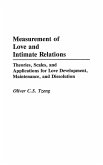Lampert presents the story of love: when, why, and how love became a central experience of humans. Assuming that our world is built of matter, she states that evolution is the change of this matter, according to the supreme criterion of success in offspring reproduction. Love evolved because of its contribution to reproduction. It first appeared in the mothers of mammals, who used the body's proximity as a main adaptation. Human love expands its borders to include the relationships between women and men, friends, and even nonhuman subjects. Lampert describes motherhood as the source of the genetic, hormonal, brain, and behavioral changes that we call love. In the sexual stage, love enters both as a way to select a partner and as a bonding force. Sexuality is built upon ancient layers of early forms of life, before humanity, and includes strong elements of aggression which interrupt our ability to experience a peaceful sexual life. Maternal love and sexual love combine in the evolution of the family. Lampert also examines homosexual love as a way to look at the fascinating process of growing sexual identity and behavior in an individual. Written in a style suited to any educated person, Lampert uses current scientific knowledge on the brain, hormones, the nervous system, ethology, psychology, and even modern physics to make her case. This book will be of interest to students and scholars alike.
Hinweis: Dieser Artikel kann nur an eine deutsche Lieferadresse ausgeliefert werden.
Hinweis: Dieser Artikel kann nur an eine deutsche Lieferadresse ausgeliefert werden.








